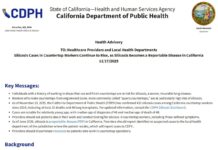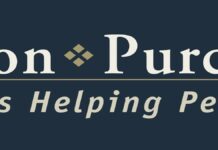The results underscore access to care, affordability, and reliable health information are barriers to care, especially for underserved communities
WASHINGTON, Feb. 12, 2025 /PRNewswire-HISPANIC PR WIRE/ — A new Ipsos poll commissioned by the Alliance for Women’s Health and Prevention (AWHP) reveals that 42% of women are forgoing preventive care services such as annual check-ups, medical tests or treatments, and vaccines, or had trouble getting an appointment with a provider in the last year. The survey of 3,199 American women aged 18 and older looked at their experiences with and perceptions of preventive healthcare, where and how they receive their health information, and existing disparities.

Challenges with Preventive Care
The survey shows women face challenges accessing preventive care due to affordability concerns, time constraints given other obligations, and prioritization. More than 4 in 10 women experienced issues accessing care in the last year.
|
Q: In the past 12 months have you experienced any of the following? |
|
|
Did not get a routine or recommended vaccine |
26 % |
|
Skipped preventive health services, such as a yearly check-up or routine test |
19 % |
|
Skipped a medical test or treatment |
13 % |
|
Couldn’t get an appointment with a primary care provider (PCP) |
12 % |
|
Couldn’t get an appointment with an OBGYN |
8 % |
|
Couldn’t get an appointment for a health screening or diagnostic test |
5 % |
|
Experienced any of the above |
42 % |
When asked why they have not received preventive care in the past 12 months, women cite not feeling the need to get preventive care (29%), not being able to afford the out-of-pocket costs (22%), and obligations such as work, school, and childcare (19%) as the top reasons.
Even more concerning, those who experience issues accessing preventive care are more likely to have a family history of cancer, cardiovascular disease, mental health conditions, and obesity.
“Affordability and informational barriers continue to hinder women’s preventive healthcare—including vaccines, screenings, and routine check-ups,” said Millicent Gorham, CEO of AWHP. “We must do more to support accessible and affordable preventive healthcare for all women—regardless of race, ethnicity, or zip code. AWHP will continue to advocate for policies that support early detection and diagnosis and advance access to preventive care for all women and girls.”
Women Are Turning to Social Media for Health Information
The survey underscores that where women receive their health information varies. While healthcare providers are a primary source of information for over half of the women surveyed (66%), social media is also seen as a valuable resource.
- 39% of women say that social media is a valuable resource for finding information and seeking peer support for health issues.
- 23% report following health advice they heard or saw on social media, with women who skip preventive care more likely to do so.
- A quarter of women under age 50 (24%) say that health influencers are just as reliable as healthcare providers.
Notably, however, 68% of women say they have encountered confusing information on social media.
“Social media is a valuable tool for sharing healthcare resources and building communities among individuals with shared experiences, however, it’s important that women continue to talk with their provider about what is best for their unique needs and circumstances,” said Cheruba Prabakar, MD, a board-certified OBGYN, founder and CEO of Lamorinda Gynecology and Surgery and member of AWHP’s Advisory Council. “AWHP’s survey results show that 1 in 4 women under 50 (24%) agree that health influencers are as reliable as healthcare providers—but the Internet should be supplementary, and not a substitute, for working with a healthcare professional.”
Women Want to Maintain Access to Vaccines
While nearly half of women (48%) agree that there can be stigma and judgment around getting vaccinated, more than 9 in 10 women say it’s important that vaccines are available and accessible to everyone who wants them (92%) and say that it’s important that vaccines remain covered by insurance (92%).
Approximately three-quarters (73%) of women report being up to date on their vaccines and half (50%) say that they talked to their provider about vaccines in the last year. Patient-provider conversations about vaccines remain critical given that 81% of women say they would get a vaccine if a provider recommended it.
More than half of women (51%) report receiving a vaccine in the last year. However, the data also show disparities in vaccination among racial groups. Only 42% of Black women and 46% of Hispanic women report being vaccinated in the past year compared to 55% of white women.
Women who report facing barriers to vaccination cite potential side effects (38%), not thinking they need to be vaccinated at this time (28%), and affordability concerns (13%) as the top reasons.
Disparities Across Cancer Screenings
Most women are familiar with breast (85%), colorectal (70%), and cervical (65%) cancer screenings, but fewer are familiar with lung cancer screenings (28%). This is concerning given lung cancer is the second most diagnosed cancer for women and the leading cause of cancer death for women.
Despite awareness, many women are not up to date on their screenings. The data show:
- 74% of women report being up to date on breast cancer screening.
- 61% of women report being up to date on cervical cancer screening.
- 60% of women report being up to date on colorectal cancer screening.
- 36% of women report being up to date on lung cancer screening.
Disparities exist in screenings. Only 47% of women report being screened for cervical cancer in their lifetime, revealing a significant gap that may stem from disparities in access, awareness, or perceptions of screening guidelines. The data also highlights differences in cervical cancer screening rates between racial groups, as 50% of white women indicate having been screened in their lifetime, compared to only 43% of women of color.
When asked why they didn’t receive a screening, those who face barriers to screening cited not thinking they needed one (26%), not receiving a recommendation from their provider (22%), not being able to afford the out-of-pocket costs (18%), and not having a family history (15%) as the top reasons.
Although 78% of women are satisfied with the information and resources available to make informed decisions regarding cancer screenings, there are still issues with access and equity.
- Women of color are less likely to be satisfied with the information and resources available to them compared to white women (74% vs 82%, respectively).
- Women of color are more likely to say there is stigma and judgment around seeking cancer services. This is predominantly felt by Black and Hispanic women (43% and 45%, respectively) compared to white women (23%).
“This research reinforces the inequities we know are prevalent in healthcare and particularly in women’s health,” said Haywood Brown, MD, a board-certified OBGYN and member of AWHP’s Board of Directors. “Black women are more likely to die from breast and cervical cancers, despite advancements in screenings, and we must continue working to create an environment where all women—and especially women of color—are heard while providing them with the valuable information and resources they need to make informed decisions about their health.”
About the Survey
This Alliance for Women’s Health and Prevention (AWHP)/Ipsos Poll was conducted online from December 21st, 2024 – January 8th, 2025, by Ipsos. This poll is based on a national sample of 3,199 adults who identified as female (age 18 or older), combining a sample from the probability-based KnowledgePanel® (n=1,114) and a non-probability sample (n=2,085).
The study was conducted in both English and Spanish. The data were weighted to adjust for age, race/ethnicity, education, Census region by metropolitan status, household income, and language dominance among Hispanics. The demographic benchmarks for women ages 18 and older in the US came from the 2024 March Supplement of the Current Population Survey (CPS), with the exception of the language dominance benchmarks which were obtained from the 2023 American Community Survey (ACS). The weighting categories were as follows:
- Age (18-29, 30-44, 45-59, 60+)
- Race/Hispanic ethnicity (White/Non-Hispanic, Black/Non-Hispanic, Other/Non-Hispanic, Hispanic, 2+ Races/Non-Hispanic)
- Education (Less than High School, High School, Some College, Bachelor and higher)
- Census Region (Northeast, Midwest, South, West) by Metropolitan Area (Yes, No)
- Household Income (Under $25K, $25K–$49,999, $50K–$74,999, $75K–$99,999, $100K–$149,999, $150K and over)
- Language Dominance among Hispanics (English Dominant Hispanic, Bilingual Hispanic, Spanish Dominant Hispanic, Non-Hispanic)
- This survey was partially conducted using the Ipsos KnowledgePanel, the most well-established online probability-based panel that is representat
ive of the adult US population. Panelists were recruited into this invitation-only panel via postal mailings to a random selection of residential addresses. To ensure that non-internet households are included, Ipsos provided an internet-enabled tablet to those who need them. Additional sample was obtained using a non-probability sample with a quota design to increase the overall study sample size and allow for analyses of subpopulation groups of interest.
Additional weighting adjustments were made using Ipsos’ proprietary calibration approach, which weighted respondents from the non-probability sample to benchmarks from the weighted KnowledgePanel sample based on the categories below. These additional adjustments are designed to reduce the bias known to be associated with non-probability samples that are not addressed with standard geodemographic weighting.
- Daily Television Consumption (< 3 hours/day, 3+ hours/day)
- Weekly Internet Personal Usage (< 10 hours/week, 10+ hours/week)
- Willingness To Express Political/Community Opinions Online (Less than once a month or more often, Not at all)
- Willingness To Try New Products (Not at all/Somewhat, A lot/Completely)
The topline results from the survey can be accessed here.
About AWHP
The Alliance for Women’s Health and Prevention is a non-partisan 501(c)(4) non-profit organization working to ensure that all women and girls have access to high-quality preventive care. Our mission is to advance policy that drives equitable access and prevents the burden and progression of disease to improve the lives and health of all women and girls.
For more information on AWHP, please visit WomensHealthandPrevention.org and follow us on LinkedIn and X @AWHPOrg.
Photo – https://mma.prnewswire.com/media/1929564/AllianceforWomensHealthPrevention.jpg
SOURCE Alliance for Women’s Health & Prevention






